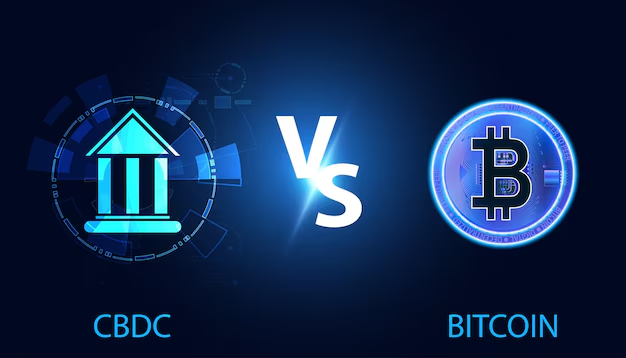As we approach 2025, the landscape of digital finance is increasingly shaped by two prominent developments: Central Bank Digital Currencies (CBDCs) and cryptocurrencies. While both exist in the digital realm, they differ fundamentally in design, control, and purpose. Understanding these distinctions is crucial for envisioning the future of digital finance.
Central Bank Digital Currencies (CBDCs): State-Controlled Digital Money
CBDCs are digital forms of a nation’s fiat currency, issued and regulated by central banks. They aim to complement physical cash, providing a state-backed digital payment option.
Global Adoption and Implementation
By 2025, several countries have made significant strides in implementing CBDCs:
- China’s Digital Yuan: The People’s Bank of China has been pioneering the digital yuan, positioning it as the first major economy to issue a CBDC.
- The Bahamas’ Sand Dollar: Launched by the Central Bank of The Bahamas, the Sand Dollar is among the earliest fully operational CBDCs.
- Nigeria’s e-Naira: The Central Bank of Nigeria introduced the e-Naira to enhance financial inclusion and digital payment efficiency.
- European Union’s Digital Euro: The European Central Bank (ECB) has been actively exploring the introduction of a digital euro. In October 2023, the ECB announced the progression to the preparation phase, including a public pilot, aiming for a possible launch by 2025-2026. en.wikipedia.org
- United Kingdom’s Digital Pound: The Bank of England and the UK Treasury have been discussing the potential introduction of a digital pound. While initial plans considered a launch in the late 2020s, as of March 2024, officials indicated that a digital pound would not be introduced before 2030, with proposed holding limits to mitigate potential banking risks.
Advantages and Considerations
CBDCs offer several potential benefits:
- Financial Inclusion: Providing digital payment solutions to unbanked populations.
- Payment Efficiency: Streamlining transactions and reducing reliance on physical cash.
- Monetary Policy Implementation: Enhancing central banks’ ability to implement and monitor monetary policies.
However, challenges such as privacy concerns, technological infrastructure requirements, and the potential impact on traditional banking systems remain subjects of ongoing debate.
Cryptocurrencies: Decentralized Digital Assets
Cryptocurrencies, like Bitcoin and Ethereum, are decentralized digital assets operating on blockchain technology. They are not controlled by any central authority, embodying principles of transparency, security, and decentralization.
Market Dynamics and Adoption
The cryptocurrency market has experienced significant growth, with various countries adopting differing regulatory approaches:
- United States: The U.S. has shown increasing interest in integrating cryptocurrencies into its financial system. Discussions about establishing a strategic bitcoin reserve have emerged, reflecting a growing acceptance of digital assets.
- China: In contrast, China has intensified its crackdown on private cryptocurrencies, reinforcing bans and promoting its state-backed digital yuan.
Benefits and Challenges
Cryptocurrencies offer unique advantages:
- Decentralization: Eliminating the need for intermediaries in financial transactions.
- Transparency: Utilizing public ledgers to record transactions, enhancing accountability.
- Innovation: Fostering the development of decentralized finance (DeFi) platforms and applications.
Nonetheless, issues such as price volatility, regulatory uncertainty, and concerns over illicit activities pose challenges to widespread adoption.
The Future of Digital Finance in 2025: A Comparative Outlook
By 2025, the coexistence of CBDCs and cryptocurrencies is expected to define the digital financial ecosystem. Here’s how they might shape the future:
Coexistence and Integration
Both CBDCs and cryptocurrencies are likely to coexist, serving different purposes:
- CBDCs: Functioning as digital equivalents of national currencies, facilitating secure and efficient domestic and international payments.
- Cryptocurrencies: Offering alternative investment opportunities and enabling decentralized financial services.
Financial institutions may integrate both, providing consumers with diverse options tailored to their needs.
Regulatory Developments
Governments and regulatory bodies are expected to establish clearer frameworks:
- For CBDCs: Implementing policies to ensure security, privacy, and interoperability with existing financial systems.
- For Cryptocurrencies: Balancing innovation with consumer protection, addressing risks associated with volatility and illicit use.
The UK’s cautious approach to the digital pound, with considerations about privacy and cost, exemplifies the careful deliberation required in implementing state-backed digital currencies.
Technological Advancements
Advancements in blockchain and distributed ledger technologies will enhance the functionality of both CBDCs and cryptocurrencies:
- Scalability: Improving transaction speeds and reducing costs.
- Security: Enhancing protocols to protect against cyber threats.
- Interoperability: Ensuring seamless interaction between different digital currencies and traditional financial systems.
Public Perception and Trust
Public acceptance will hinge on trust and perceived utility:
- CBDCs: Trust will be influenced by central banks’ reputations and assurances regarding data privacy.
- Cryptocurrencies: Wider adoption will depend on addressing volatility concerns and demonstrating real-world applications.
Educational initiatives and transparent communication will play vital roles in building confidence among users.
Conclusion
The digital finance landscape of 2025 will be characterized by the parallel existence of Central Bank Digital Currencies (CBDCs) and cryptocurrencies. CBDCs will offer state-backed digital payment solutions, enhancing financial inclusion and payment efficiency, while cryptocurrencies will continue to provide decentralized alternatives. This coexistence is expected to foster a diverse financial ecosystem, offering consumers a range of choices tailored to their preferences for security, privacy, and autonomy.
However, this dual system also presents challenges, particularly in regulatory frameworks and monetary policy implementation. Governments will need to balance the benefits of innovation with the need for financial stability and consumer protection. The interplay between CBDCs and cryptocurrencies will likely influence global financial dynamics, potentially reshaping cross-border transactions and the traditional banking sector. As both forms of digital currency evolve, their impact on the economy will depend on technological advancements, regulatory responses, and public adoption rates.
In summary, the financial landscape of 2025 will be marked by the integration of both centralized and decentralized digital currencies, each contributing uniquely to the evolving digital economy.
